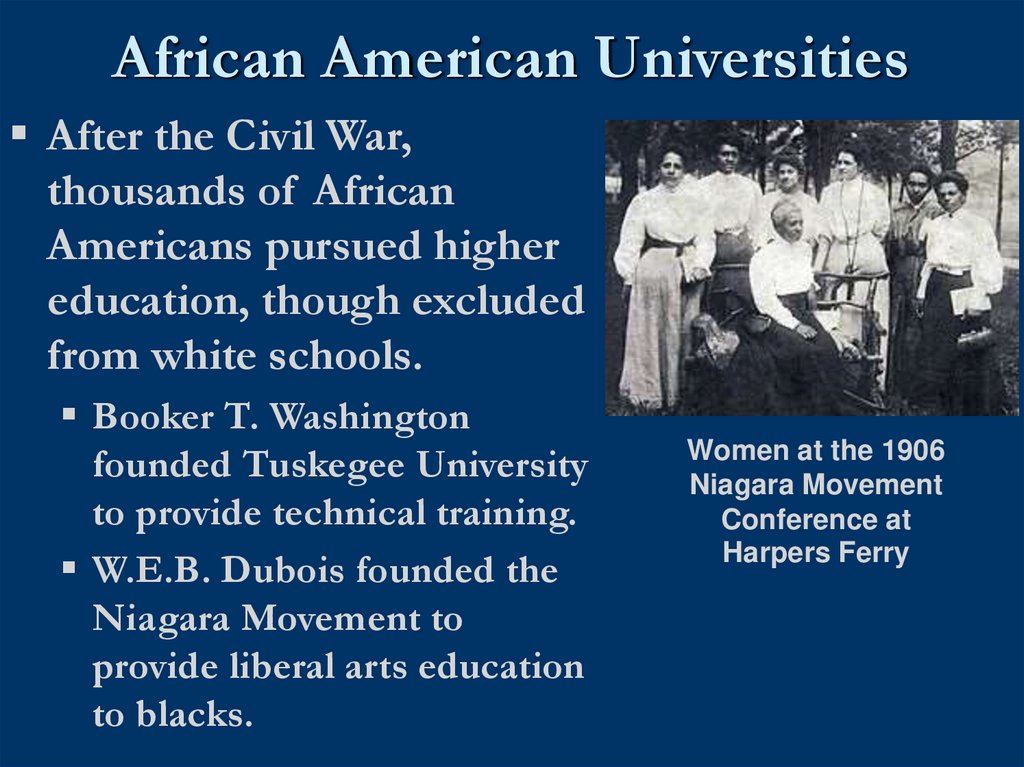Similar presentations:
Life in America at the turn of XX century
1. Life at the Turn of the 20th Century Urbanization, New Technologies, Education, Discrimination, Mass Culture, Consumerism
Life at the Turnth
of the 20 Century
Urbanization, New Technologies,
Education, Discrimination,
Mass Culture, Consumerism
2. Science and Urban Life
By the turn of the 20thcentury, 40% of Americans
lived in cities.
In response to
urbanization,
technological advances
began to meet demands in:
1. communication
2. Transportation
3. space
3. Skyscrapers
Skyscrapers emerged afterelevators & steel skeletons to
bear weight were invented.
Examples include Daniel
Burnham’s Flatiron Building in
NYC and Louis Sullivan’s
Wainwright Building in St. Louis.
Flatiron Building - 1902
The skyscraper, America’s
greatest contribution to
architecture, solved the issue of
how best to use limited and
expensive space.
4.
Another view of Burnham’s Flatiron Building5. Electric Transit
Changes intransportation
allowed cities to
spread outward.
By the turn of the
century, intricate
networks of electric
streetcars – also
called trolley cars –
ran from outlying
neighborhoods to
downtown offices &
stores.
6. El’s and Subways
A few large citiesmoved their
streetcars far above
street level, creating
elevated or El trains.
Other cities built
subways by moving
their rail lines
underground
7. Bridges and Parks
Steel-cable suspensionbridges also brought cities’
sections closer.
Brooklyn Bridge
Some urban planners
sought to include
landscaped areas and
parks.
Frederick Law Olmsted--Central park, NYC.
Central Park is an oasis among
Manhattan’s skyscrapers
8. City Planning: Chicago
Chicago's lakefront features parks,harbors for pleasure boats, and
stunning views of the city's skyline
Daniel Burnham
oversaw the
transformation of
Chicago’s lakefront
from swampy
wasteland to elegant
parks strung along
Lake Michigan.
Today Chicago’s
lakefront is one of the
most beautiful
shorelines in North
America.
9. New Technologies
New developments incommunication
brought the nation
closer.
Advances in:
Printing
Aviation
photography
helped speed the
transfer of information.
10. A Revolution In Printing
By 1890, the literacy rate in theU.S. was nearly 90%.
American mills began to
produce huge quantities of
cheap paper from wood pulp.
Electrical web-presses printed
on both sides of paper at the
same time.
Faster production and lower
costs made newspapers and
magazines more affordable.
Most papers sold for 1 cent.
11. Airplanes
In the early 20th century,brothers Orville and Wilbur
Wright, experimented with
engines and aircrafts.
They built a airplane and on
December 17, 1903, they flew
it for 12 seconds over 120 feet.
Two years later, they were
making 30 minute flights and
by 1920, the U.S. was using
airmail flights regularly.
Wright Brother’s first flight
12. Explosion of Photography
Before 1880, photography was aprofessional activity.
Subjects could not move and the
film had to be developed
immediately.
Then George Eastman invented
lighter weight equipment and
more versatile film.
In 1888, he introduced his Kodak
camera
It cost $25 camera and came with a
100-picture roll of film
13. Section 2
Expanding Public Education14. Expanding Public Education
Between 1865 and 1895,states passed laws
requiring 12 to 16 weeks of
annual education for
students ages 8-14, but the
curriculum was poor and
the teachers were usually
not qualified. However, the
number of kindergartens
expanded from 200 in 1880
to 3,000 in 1900
15. High School Enrollment
High schoolsexpanded their
curriculum to
include science,
civics and social
studies. By 1900,
500,000
teenagers were
enrolled in high
schools.
16. Racial Discrimination
African Americanswere usually excluded
from secondary
education. In 1890,
less than 1% attended
high school. By 1910,
that figured had
reached only 3%.
17. Education for Immigrants
Unlike AfricanAmericans, immigrants
were encouraged to go
to school. Most
immigrants sent their
children to public
schools. In addition,
thousands of adult
immigrants attended
night schools to learn
English.
18. Expanding Higher Education
In 1900, less than 3%of America’s youth
attended college.
Between 1880 and 1920
college enrollments
more than quadrupled.
Professional schools
were established for
law and medicine
19. African American Universities
After the Civil War,thousands of African
Americans pursued higher
education, though excluded
from white schools.
Booker T. Washington
founded Tuskegee University
to provide technical training.
W.E.B. Dubois founded the
Niagara Movement to
provide liberal arts education
to blacks.
Women at the 1906
Niagara Movement
Conference at
Harpers Ferry



















 history
history








